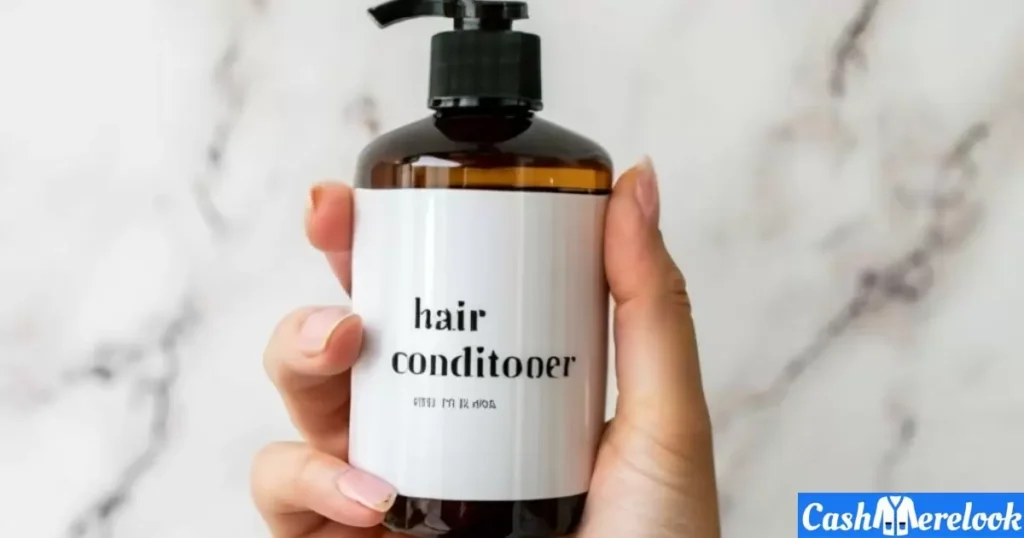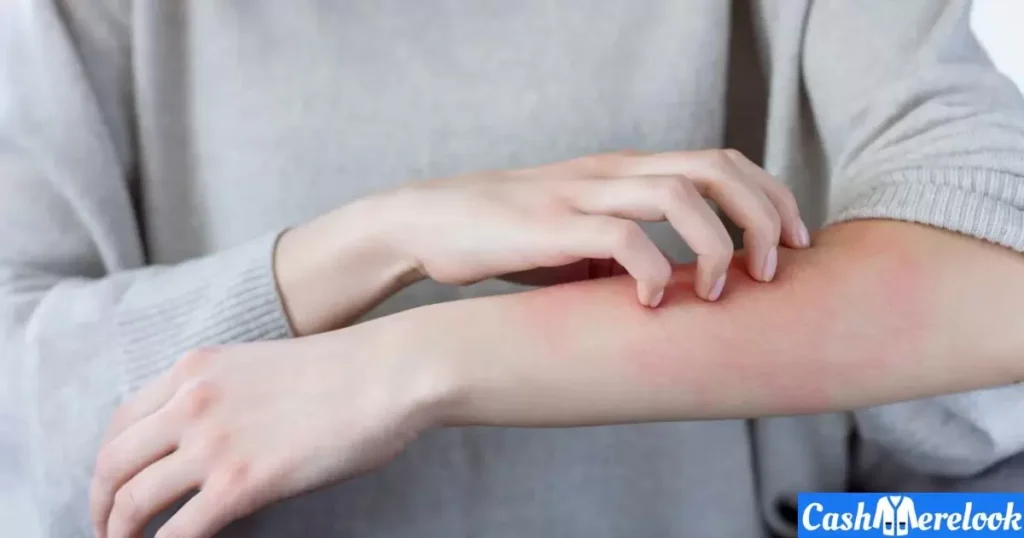Cashmere is a type of soft and luxurious wool. It’s not usually itchy, so wearing luxury fabric feels comfortable on the skin.
Feel the luxurious softness; it’s like a gentle cloud on your skin. But, is this exquisite fabric itchy? Let’s uncover the truth and see if this cozy material lives up to its reputation!
Wrapped in cashmere, it feels like a gentle hug. Let’s explore this soft wonder, uncovering its secrets and comforts!
Can Cashmere Cause Skin Irritation?

Ever wondered if your favorite soft and luxurious sweater might lead to an itch? Fear not! Cotton Cashmere, known for its gentle touch, is less likely to cause skin irritation compared to other fabrics.
When it comes to that occasional itching feeling, it’s crucial to choose the right type of fabric. Luxurious blends, such as those with Merino Wool, offer a cozy embrace without the annoyance of constant scratching.
For those with sensitive skin, understanding potential allergic reactions is key. Seek the advice of a medical professional or allergist, especially if you suspect you might be allergic to the materials used in your favorite wardrobe pieces.
Curious about how these garments are made? The manufacturing process involves collecting the undercoat hairs from Mongolian or Chinese goats, ensuring a soft and delicate texture that minimizes the risk of irritation.
Prevention is better than cure! To avoid any itchiness, consider using a hair conditioner or a vinegar and water solution when caring for your beloved garments. Opting for a blend can also contribute to a smoother, less irritating experience.
In summary, when it comes to the feel of your clothing, choosing the right materials and practicing proper maintenance can make all the difference in ensuring a silky, sumptuous touch without any discomfort.
Understanding the Factors Behind Cashmere Itchiness
Ever wondered what causes that occasional itchiness in your favorite cozy garments? Let’s dive into understanding the factors behind the occasional discomfort.
Choosing the right fabric is essential to prevent irritation. Cotton Cashmere, a blend known for its softness, tends to be less itchy than some other materials. When picking out your clothing, consider options like Wool or Merino Wool for a snug feel without scratchiness.
The construction of your sweater plays a crucial role in how it feels against your skin. Sometimes, itchiness can result from improperly conditioned fibers or the overall construction of the garment. It’s like ensuring the puzzle pieces fit perfectly; a well-constructed piece minimizes the risk of irritation.
Allergies can also contribute to that nagging itch. If you find yourself scratching more often, consider whether you might be allergic to certain materials used in your clothing. Consulting with a medical professional or allergist can help identify and address any allergic reactions.
Chemicals and dyes used in the manufacturing process can be culprits too. Opting for garments labeled as hypoallergenic can minimize the risk of exposure to potentially irritating substances.
Preventing itchiness involves proper care. Hand-washing your clothes with a gentle detergent or a dedicated cashmere shampoo can maintain the softness. When drying, opt for a natural method to avoid harshness, contributing to more comfortable wear.
In conclusion, understanding the factors behind occasional itchiness involves considering the fabric, construction, allergies, and the manufacturing process. By being mindful of these aspects and taking proper care of your garments, you can enjoy cozy comfort without unwanted irritation.
Strategies to Minimize Cashmere Itching Sensation
To keep that cozy feeling without the itch, try these simple strategies. First, use a hair conditioner or a mixture of vinegar and water when washing. Consider a blend with Merino Wool for less irritation. And remember, the way you dry it matters—go for natural air-drying. These steps will help you enjoy your favorite garments without the annoying itchiness.
Enhance Softness with Hair Conditioner

Certainly! Elevating the softness of your favorite garments is a simple and effective task, and it involves a household item you likely have in your bathroom: hair conditioner. Here’s a detailed guide on how to enhance softness with hair conditioner:
Begin by preparing a basin or sink with lukewarm water. Ensure that the water is neither too hot nor too cold, as extreme temperatures can affect the fabric.
Add a small amount of your preferred hair conditioner to the water. The conditioner serves as a softening agent, and its emollient properties work wonders on various fabrics, including those that might be prone to itchiness.
Gently mix the conditioner into the water, creating a diluted solution. You don’t need much; a little goes a long way. The goal is to create a mild conditioning bath for your garments
Place the garment into the water, ensuring that it is fully submerged. Gently massage the fabric, allowing the conditioner to penetrate its fibers. This step is crucial for ensuring an even softening effect.
Let the garment soak in the conditioner-infused water for a short period, typically 15 to 30 minutes. This allows the conditioner to work its magic, imparting a silky softness to the fabric.
After the soaking period, carefully rinse the garment under cool running water. Make sure to remove all traces of the conditioner to prevent any residue that could affect the fabric’s texture.
Gently squeeze out excess water from the garment without wringing or twisting, as this could damage the fibers.
Finally, lay the garment flat on a clean, dry towel. Roll the towel and the garment together to absorb additional moisture. Afterward, reshape the garment and lay it flat to air dry.
By incorporating hair conditioner into your garment care routine, you can enjoy an enhanced level of softness that adds a touch of luxury to your clothing. This method is particularly effective for delicate fabrics, providing a comfortable and soothing feel against your skin.
Gentle Cleaning with Vinegar and Water

Maintaining the beauty of your delicate garments doesn’t have to be complicated; a simple solution is gentle cleaning with vinegar and water. Create a mixture using equal parts water and white vinegar, a natural alternative to harsh chemicals. This method is particularly effective for fabrics like Cotton Cashmere or Merino Wool, leaving them fresh and soft.
Start by filling a basin or sink with lukewarm water. Add the vinegar, creating a mild cleaning solution. Submerge your garment and gently agitate the water to ensure an even distribution of the mixture.
Allow the fabric to soak for about 15 to 30 minutes, letting the vinegar break down any built-up residues. This process not only cleans but also helps maintain the fabric’s integrity, making it a great option for delicate fibers.
After the soaking period, carefully rinse the garment under cool running water. Ensure thorough rinsing to remove any lingering vinegar smell. You’ll be left with a garment that feels refreshed and revitalized.
Avoid the temptation to wring or twist the fabric when removing excess water, as this can damage the fibers. Instead, gently press or pat the garment to expel water before laying it flat on a towel to air-dry.
Gentle cleaning with vinegar and water is a cost-effective and eco-friendly way to keep your favorite pieces looking and feeling their best. Whether you’re dealing with luxury fabric blends or other delicate materials, this method ensures a clean and comfortable garment, contributing to a longer lifespan for your cherished clothing.
Best Practices for Caring for Cashmere
Taking care of your cherished cashmere pieces is easy with these best practices.
Start by hand washing your garments using a gentle detergent or a specialized cashmere shampoo. This preserves the delicate fibers and prevents unnecessary wear and tear that can occur in machine washing.
When washing, use lukewarm water to maintain the fabric’s integrity. Hot water may cause shrinkage, and cold water may not effectively remove dirt and oils.
Avoid wringing out your luxury fabric items after washing, as this can damage the fibers and lead to misshaping. Instead, gently press the water out and reshape the garment while it’s damp.
Allow your garment to air dry naturally by laying it flat on a clean, dry towel. Avoid hanging it, as this can cause stretching and deformities in the fabric. Patience is key, as air-drying may take a bit longer, but it’s worth the effort for the longevity of your garments.
Storage matters too. Keep your cashmere in a cool, dry place, away from direct sunlight. A breathable garment bag or storage container can protect against dust and pests while allowing the fabric to breathe.
To fend off moths, use natural deterrents like cedar balls or lavender sachets. Moths are attracted to dirty garments, so ensuring your garment is clean before storage is a proactive measure.
Lastly, resist the urge to iron your garment. The heat can damage the delicate fibers. If wrinkles persist, simply hang your fabric item in a steamy bathroom, and let the natural moisture release the wrinkles.
By following these straightforward practices, you can keep your garment
looking and feeling its best, ensuring you enjoy the luxurious comfort of your favorite pieces for years to come.
Exploring the Likelihood of Cashmere Allergies

Curious if your favorite cozy sweater could trigger allergies? Let’s explore the likelihood of cashmere allergies. Some may be sensitive to materials, leading to irritation or discomfort. If you’re prone to allergies, consider opting for hypoallergenic fabrics or consulting an allergist.
Identifying and understanding potential triggers, like dyes or chemicals in clothing, is essential for a comfortable experience. By staying informed, you can enjoy your wardrobe without worrying about unwanted reactions, ensuring cozy and allergen-free wear.
Identifying Authentic Cashmere: A How-To Guide
Here are some easy steps to identify the real cashmere.
Assessing Authenticity Through Stretching
Ensuring the authenticity of your luxurious wool is straightforward. Utilize the stretch test – genuine wool bounces back when gently pulled. Imitation materials may lack this elasticity. Feel the fabric’s resilience to confidently identify authentic merino or other high-quality wool pieces.
Transparency Check: See Through It
In your quest for authenticity, conduct a transparency check. Genuine wool maintains opacity; hold it against light. Authentic pieces won’t reveal too much skin. This easy method ensures your purchase aligns with the quality expected from true cashmere.
Quality Test: The Rub Method
Distinguish authentic wool with the rub test. Genuine fibers minimize static and pilling. Rub the fabric gently; if it retains its quality, you’re likely dealing with the real deal.
Assess Fluffiness for Authentic Cashmere
Feel the fluffiness! Authentic cashmere offers a soft and airy touch. Counterfeit versions may feel denser. Prioritize the sumptuous feel of genuine luxury fabric to experience its true luxury.
Decoding Quality: Consider the Price
Quality comes at a cost. When assessing premium wool, consider the price. Authentic, high-quality fibers demand a higher investment. Be wary of unusually low prices, as they may signal inferior materials.
Flip It Over Unveiling Clues on the Reverse Side
Turn your attention to the reverse side. Authentic cashmere exhibits consistent quality on both sides. Irregularities or differences may indicate a lack of authenticity. Examining both sides ensures a thorough assessment.
Verify Authenticity through Documentation
For added assurance, verify authenticity through documentation. Reputable sellers often provide certificates or labels confirming the material’s origin. These documents serve as tangible proof, assuring you of the genuine cashmere nature of your prized possessions.
Frequently Asked Questions
Does cashmere itchy like wool?
Cashmere is less likely to cause itching compared to traditional wool.
Is cashmere itchy to wear?
It is generally not itchy to wear due to its soft and luxurious fibers.
How to stop cashmere from itching?
Prevent it itching by using a hair conditioner or a vinegar and water solution during washing.
Conclusion
Cashmere is a type of soft and luxurious wool. It’s not typically itchy, so wearing this cozy fabric feels comfortable on the skin. Experience the sumptuous softness of this fine material; it’s akin to a gentle cloud on your skin. But, does Cashmere cause any discomfort? Let’s unravel the truth and see if this plush fabric lives up to its reputation! Enveloped in this exquisite blend, it feels like a gentle hug. Let’s explore the wonders of this soft textile, revealing its secrets and comforting embrace!












